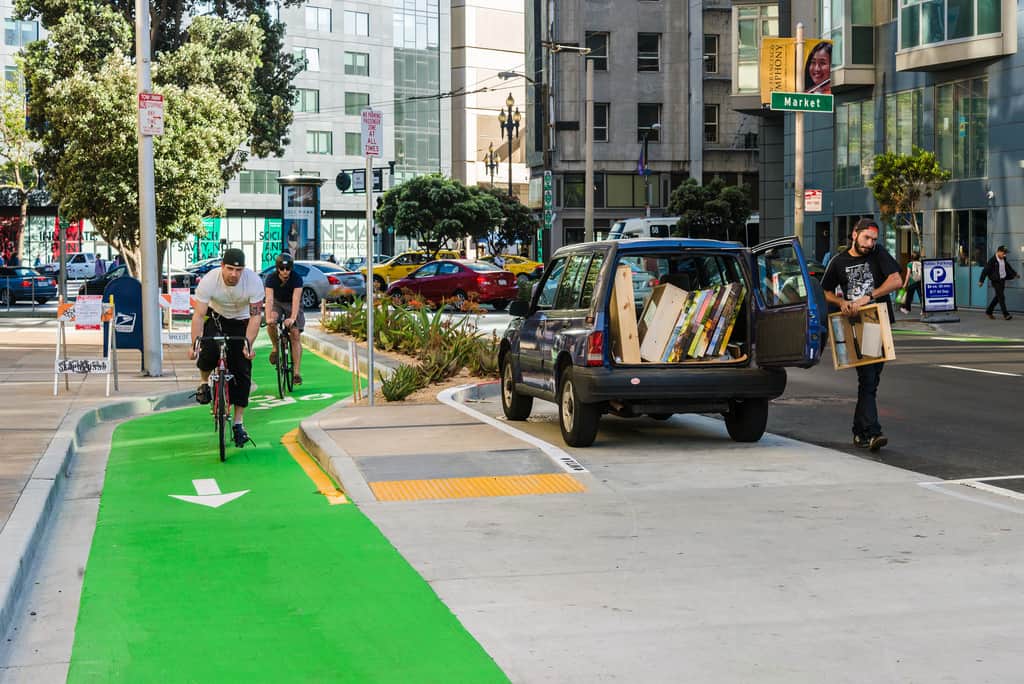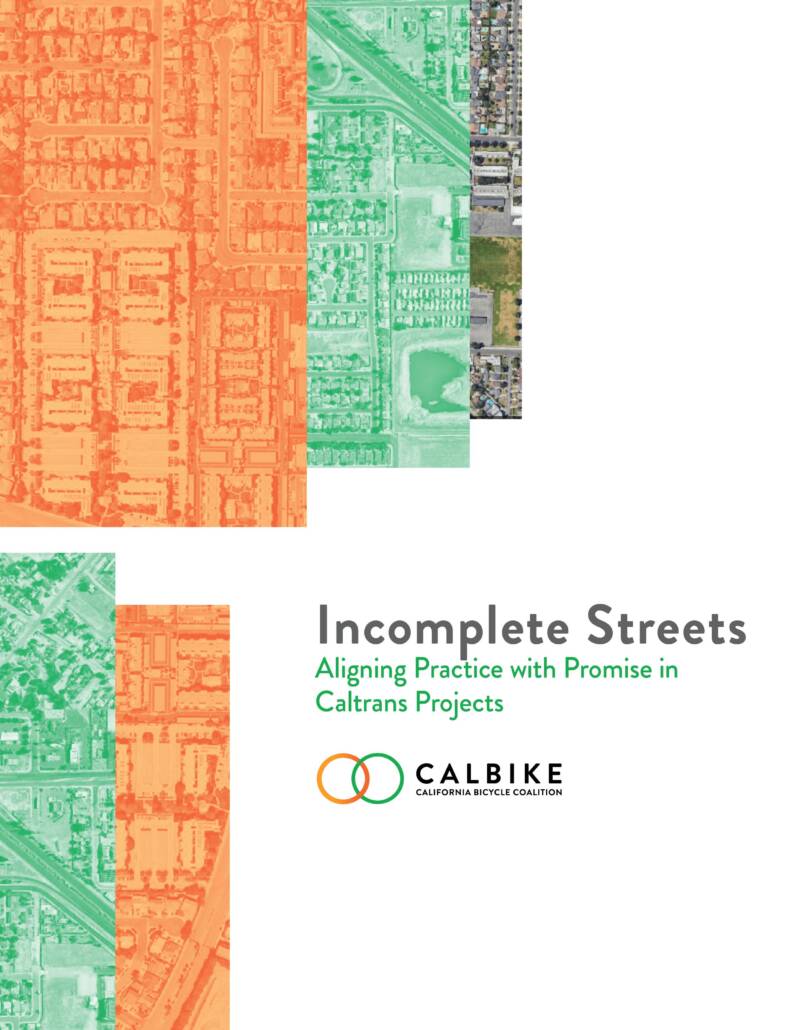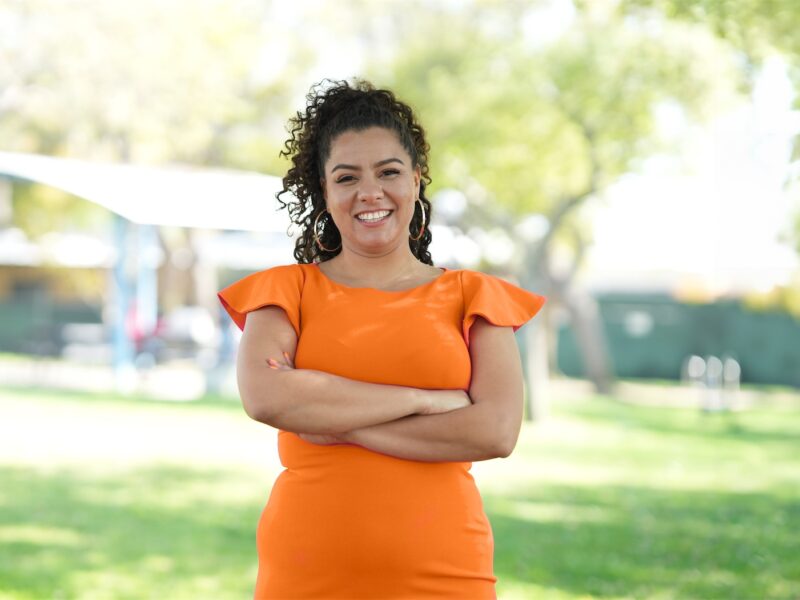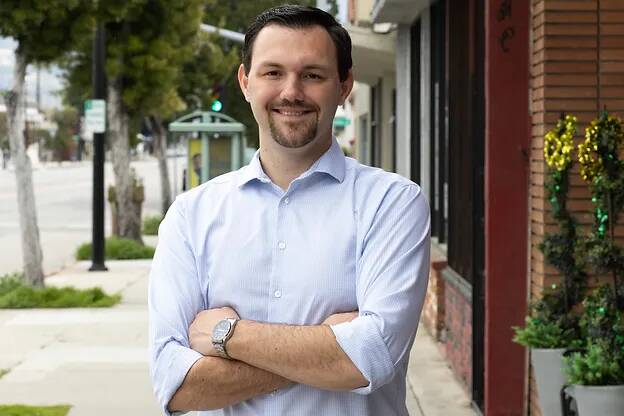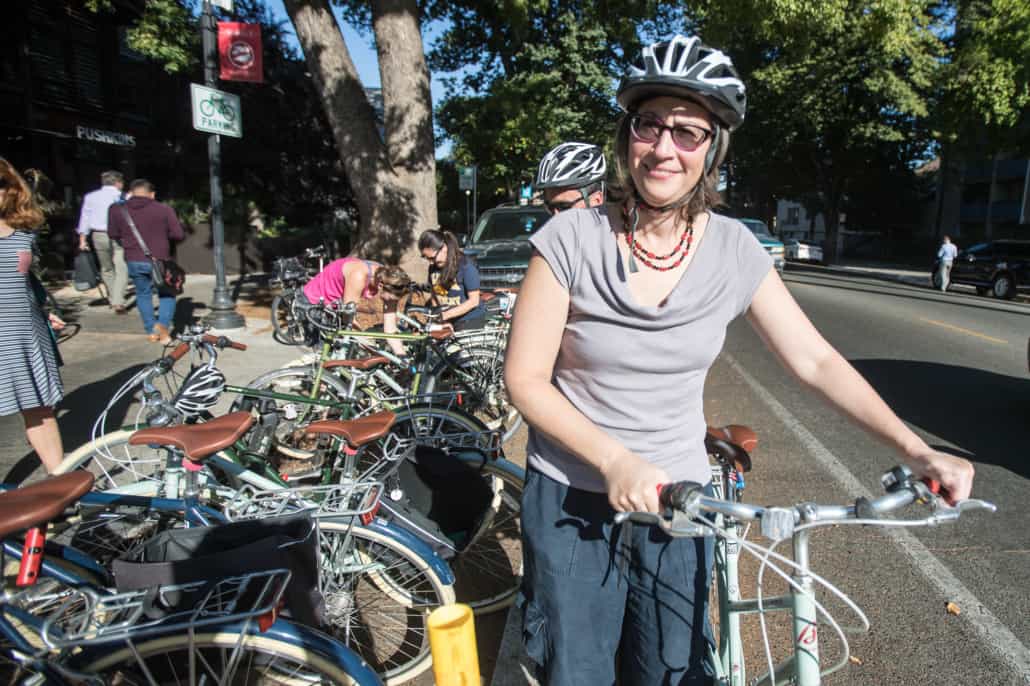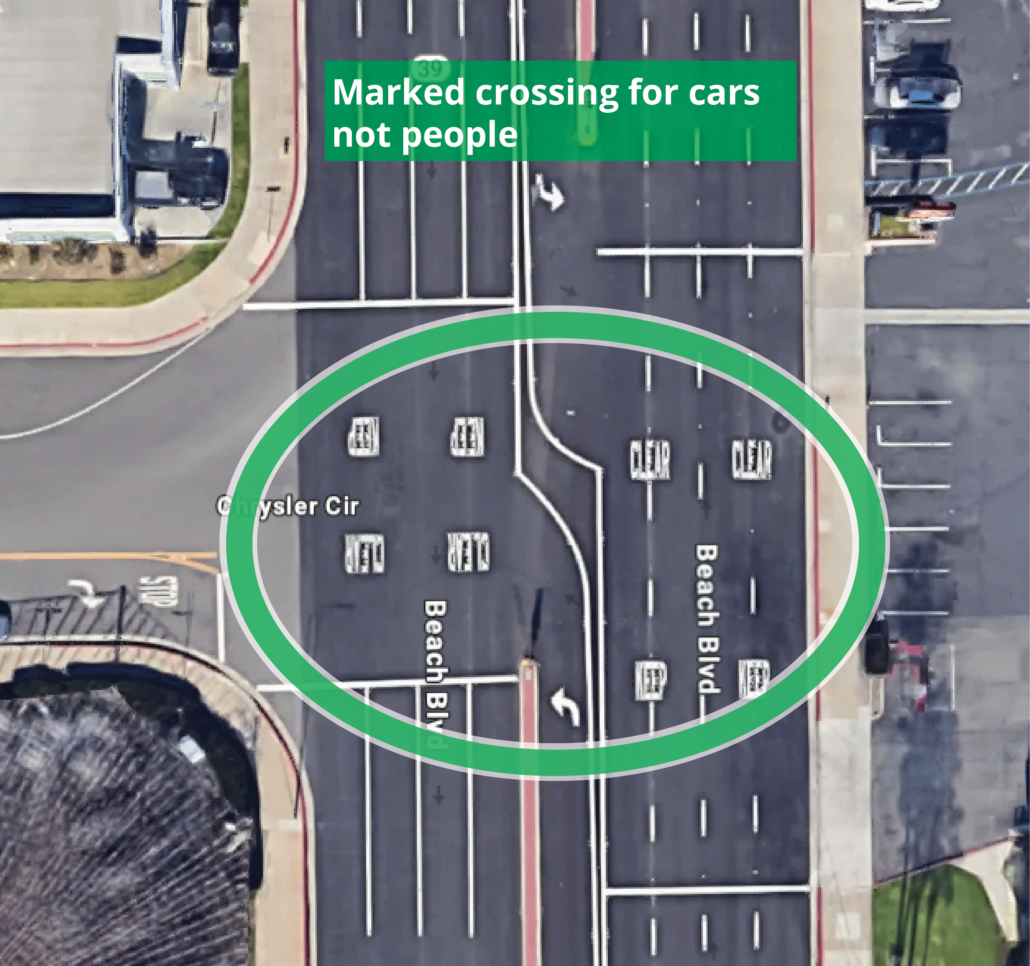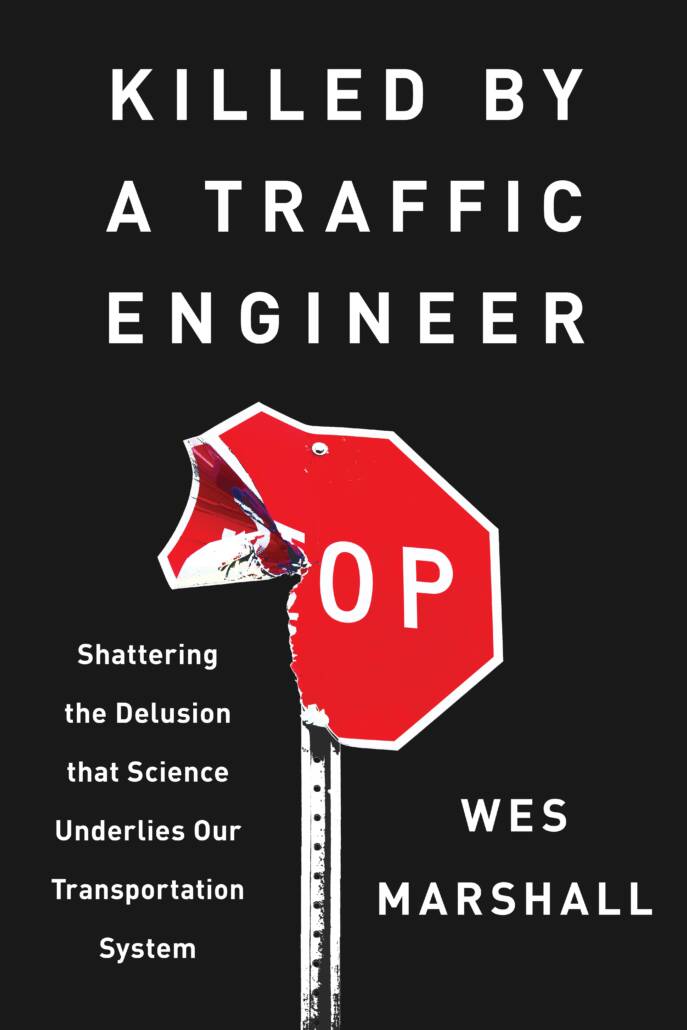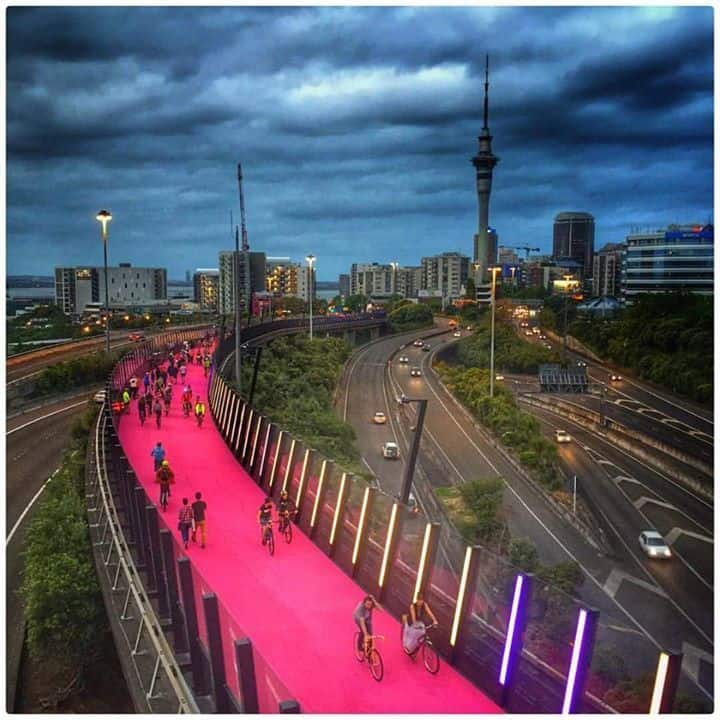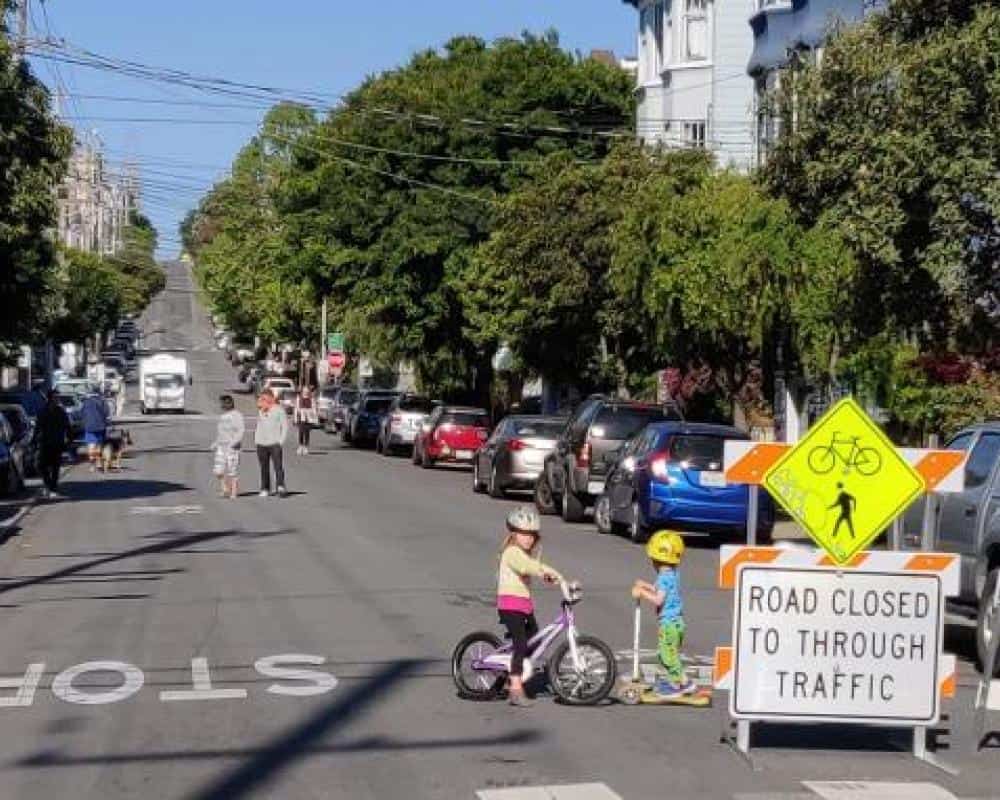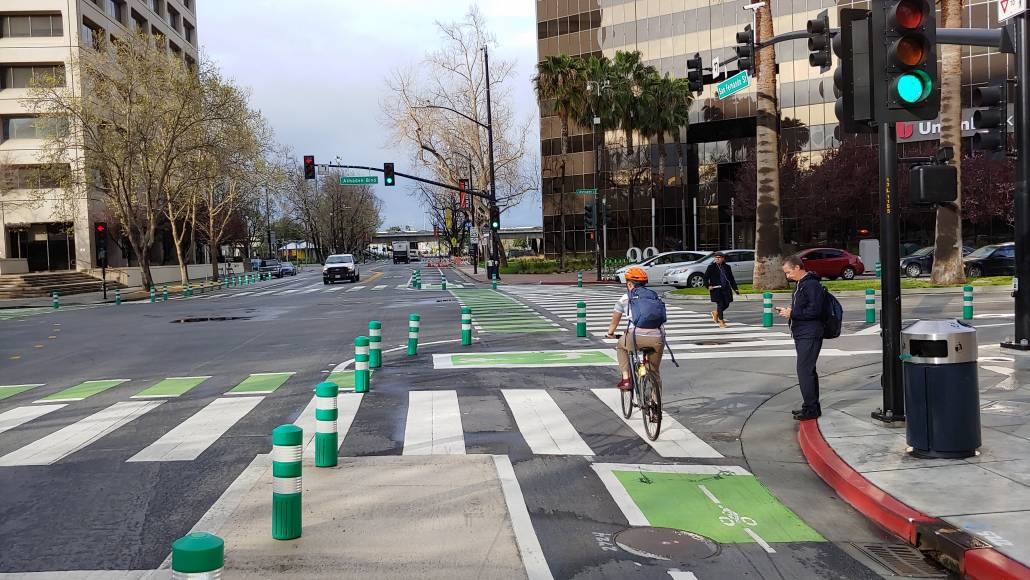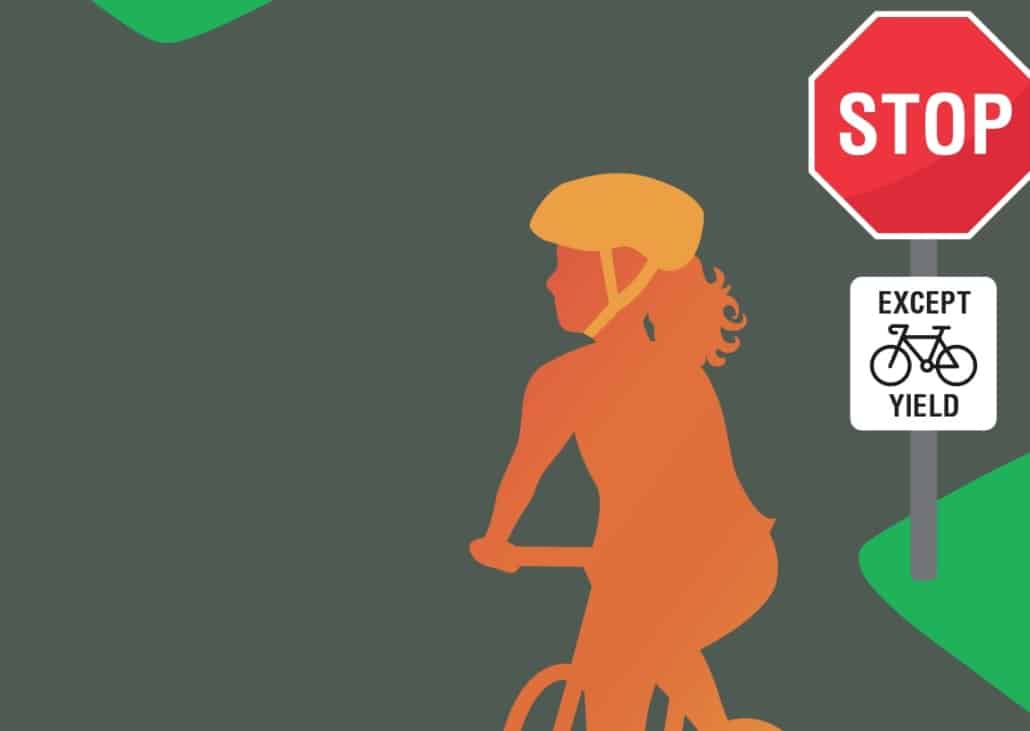In recent years, the number of pedestrians and bicyclists killed and seriously injured on roadways in California has steadily increased. The U.S. is now an outlier among developed nations in the rate of road deaths, and California has the highest total number of pedestrian deaths.
Vulnerable road users (VRUs) are people on our roads and sidewalks who don’t have the protection of a vehicle’s cage to keep them safe. This includes people walking, biking, riding scooters and skateboards, using mobility aids, and traveling by horseback.
As long as we prioritize the desires of car and truck drivers at the expense of others in our transportation systems, people walking and biking will continue to be disproportionately injured and killed on our shared roads. Here are some policy changes that could help make our streets safer for everyone.
Varied paths to VRU safety
There are lots of ways to make our streets safer for people outside of motor vehicles. Infrastructure is at the top of the list, but changing our streets scan be costly and time-consuming. While a project moves slowly through the planning process, more people die. CalBike is working on a quick build bill this year that we hope will result in more Complete Streets, faster and at a lower cost.
Slowing speeds is another option, since vehicle speed is one of the main factors impacting the severity of VRU injuries in a crash. We have supported legislation to reduce speeds and better enforce existing speed limits.
Another way to protect VRUs is to recognize and define the vulnerable road user in our state statute, as many other states have already done.
What is a vulnerable road user law?
In 2007, Oregon became the first state to pass a vulnerable road user law, and at least 12 states — Colorado, Connecticut, Delaware, Florida, Hawaii, Maine, Maryland, Oregon, Utah, Vermont, Virginia, and Washington — have since adopted similar laws. More states are also adding anti-harassment laws that penalize actions such as throwing objects at bicyclists and pedestrians from a moving vehicle.
VRU laws increase the penalties for drivers in a collision that results in the death or serious injury of someone outside a vehicle. They recognize the special care that people operating dangerous machines on shared streets should exercise toward those not encased in steel and moved by a powerful motor. The League of American Bicyclists has drafted model language for such laws.
The increase in VRU collisions prompted the U.S. Congress to mandate, through the Infrastructure Investment and Jobs Act (IIJA), that all states complete a VRU Safety Assessment as part of their Strategic Highway Safety Plan (SHSP). California’s assessment is very helpful in laying the groundwork for policy action to support VRUs.
Vulnerable road user laws and anti-harassment ordinances boost incentives for motorists to practice safe roadway behavior and deter unsafe behaviors around people walking and biking. They also increase opportunities for vulnerable road users to seek legal recourse after a crash. But do they work to prevent negligent driving that leads to collisions?
How effective are VRU ordinances?
In the last decade, Berkeley, Los Angeles, Sunnyvale, Sebastopol, and Santa Rosa have all adopted anti-harassment ordinances, which protect people on bicycles from “intentional threats, assaults, or harassment by motorists.”
The majority of vulnerable road user laws and anti-harassment ordinances provide increased fines and civil liability in cases where a person walking or biking is injured or killed because of negligent or intentional motorist behavior. Under most vulnerable road user laws or anti-harassment ordinances, bicyclists can bring a lawsuit against a vehicle driver in civil court — which has a lesser burden of proof than criminal court — making it easier for bicyclists to get compensated for their injuries and damages.
It’s not clear if VRU laws have the intended effect of reducing crashes and improving the safety of people walking, biking, etc. We couldn’t find studies comparing before and after crash statistics in jurisdictions that have enacted increased penalties, perhaps because the trend is relatively recent. But a recent Washington Post article about a Virginia VRU law showed that it had rarely been used.
CalBike has campaigned to decriminalize things such as jaywalking, where enforcement tends to be disproportionately aimed at people who are low-income, unhoused, or BIPOC. There’s a danger that VRU laws could be applied with the same biases, disproportionately penalizing Black and Latino drivers.
In addition, fear of stiffer penalties could increase the number of hit-and-run crashes. This is already a problem — a AAA research brief states: “The number of hit-and-run fatalities has been increasing at an average rate of 7.2% per year since 2009. A large part of this increase has been in fatal crashes involving non-vehicle occupants, mostly pedestrians.” The chance of survival for a vulnerable road user hit by a car goes down the longer they wait before getting medical attention, so more hit-and-runs leads to more preventable fatalities.
But there’s one more issue to consider with VRU laws.
Driving a car shouldn’t be a license to kill
When you read about collisions, drivers are often praised for exercising basic human decency and not fleeing the scene after they crash into a human being or an object. Police often make excuses for driver negligence, except in the most extreme cases where there is an intent to harm, and often fail to charge drivers with any crime.
This puts motor vehicles in a special category. In fact, the California Penal Code recognizes three types of manslaughter: voluntary, involuntary, and vehicular. In describing vehicular manslaughter, the code states: “This section shall not be construed as making any homicide in the driving of a vehicle punishable that is not a proximate result of the commission of an unlawful act, not amounting to a felony, or of the commission of a lawful act which might produce death, in an unlawful manner.”
You can’t be punished for murdering someone with your car unless you are committing an unlawful act. While drivers break traffic laws all the time by running lights, failing to stop at stop signs, and exceeding the speed limit, these crimes may be hard to prove.
One of the research papers we found is titled If You Want to Get Away With Murder, Use Your Car, and it’s true. We hold people operating heavy machines capable of traveling at high speeds to lower standards than anyone doing anything else. So a sense of justice could lean toward equalizing the penalties and removing the special classifications for vehicular manslaughter.
The definition of involuntary manslaughter in the California penal code is causing a death while committing a misdemeanor or “in the commission of a lawful act which might produce death.” A person can be charged with involuntary manslaughter if they are acting “without due caution and circumspection.” In other words, if you aren’t breaking the law in any other way but you accidentally kill someone, you may be charged with involuntary manslaughter. If you’re working on your roof, let a 2 x 4 fall into the street, and it hits your neighbor and kills them, you could be charged with involuntary manslaughter. You didn’t mean to do it, but you are responsible.
There’s a third category of manslaughter in the California code: vehicular. If you aren’t otherwise breaking the law in your car and you accidentally kill someone, you cannot be charged with vehicular manslaughter. For example, if someone is driving the speed limit in a truck with a grille so tall they don’t see a child in the crosswalk and run the child over, they are not guilty of vehicular manslaughter and are unlikely to be otherwise held to account.
Drivers are allowed to hit pedestrians they don’t see with impunity. It’s a legal position that normalizes the thousands of deaths on U.S. roads every year, letting drivers off with a small fine for failures of attention that cause life-changing injuries or death.
Would increased liability lead to more responsible driver behavior? It’s unclear. We certainly need to prioritize street designs that reduce speed and provide safer infrastructure for people walking and riding bikes. The question is how we reduce the carnage on our streets until we are able to make those changes.

